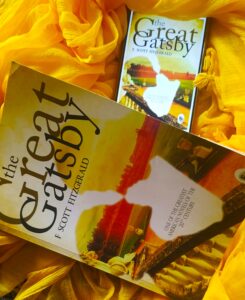
Valmiki’s Women by Anand Neelakantan Book Review:
Introduction:
Some books attract you for their gripping plots, some for portraying magnanimous characters, and some for some reasons but there are very few books that can nail you down with their intricately woven, painstakingly textured language as well as spectacular characters. Valmiki’s Women by Anand Neelakantan is such an unputdownable piece of literature that resonates deeply within me even after reading and rereading.
Author Introduction:
Anand Neelakantan is an Indian author and screenwriter who has gained widespread recognition for his innovative and thought-provoking works of fiction. Born in Kerala, India, Neelakantan has a background in engineering and worked in the software industry for several years before becoming a full-time author. Neelakantan is best known for his retelling of famous Indian epics from the perspective of marginalized characters. He first gained acclaim for his debut novel Asura: Tale of the Vanquished, which reimagines the story of the Ramayana from the point of view of Ravana, the demon king who is traditionally portrayed as the villain. Since then, Neelakantan has written several other novels, including Ajaya: Roll of the Dice, which explores the Mahabharata from the perspective of the Kauravas, and Vanara: The Legend of Baali, Sugreeva and Tara, which tells the story of the Ramayana from the point of view of the vanaras or monkey warriors.
In addition to his novels, Neelakantan has written several screenplays and worked in the Indian film industry. He is known for his bold and innovative approach to storytelling and his ability to challenge traditional narratives and reexamine familiar stories from new angles.
Neelakantan has received numerous accolades for his work, including the prestigious Crossword Book Award and the Raymond Crossword Popular Choice Award. He is considered one of the most important contemporary Indian writers and a pioneer of India’s “mythological fiction” genre.
Valmiki’s Women by Anand Neelakantan:
It is a retelling of the Indian epic Ramayana from the perspective of its female characters. The stories are the mastermind of Valmiki, the author of the Ramayana, who is struggling to write his epic and seeks inspiration from these women.
The novel explores the lives of Bhoomija, Shanta, Manthara, Tataka, and Meenakshi providing fresh air to the traditional story. These characters are less known or perhaps known as villain characters. The novel challenges the traditional portrayal of these women characters in the Ramayana and reimagines their lives, motivations, and experiences, manifesting their lives in multi-fold.
-
Bhoomija signifies one who is the daughter of Earth. Valmiki wishes to capture all the love in the world and create a woman. She will be Bhoomija.
“He would capture all the love in the world and create a woman. She would be his story, his message, his love, his goddess, his mother, and his daughter. No mortal could give birth to her. She had to be born on earth. Bhoomija would be her name. He would affectionately call her, his beloved daughter, various other names in this epic — Janaki, Maithili, Vaidehi, Sunayani or Sita, but she would always be his Bhoomija.”
-
Shanta is Dasharatha’s daughter, Rama’s sister. King Dasharatha despises her for being a girl child and in his stubborn desire to have a boy child he let Shanta be adopted by king Romapada. King Romapada seeks Shanta’s help to save his draught-stricken country. Shanta is proposed to seduce sage Rishyasringa to his country to arrange for Yajna which will bring rain.
Manthara perhaps the most repulsive character in Ramayana reappears with a new standpoint of her life that is not only fascinating but also worth reading. Neelakantan’s Manthara is no less dignified than any heroic character who can spit at the king’s treasure for the sake of her dignity.
-
Tataka is the mother of Maricha. Maricha at the instruction of Ravana takes the form of a golden deer and helps Ravana to kidnap Sita by engaging Rama and Laxmana in their chase of the golden deer. But Maricha has his own voice of revenge for doing so.
-
Meenakshi alias Surpanakha, Ravana’s sister, seeks revenge against Rama and his brothers for mutilating her nose.








Pingback: Life Beyond Love, a novella, phoenixfabulist.com